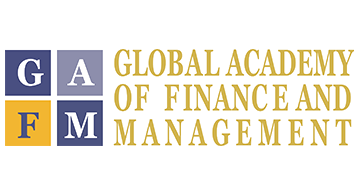Chartered Financial Economist

- Description
- Reviews
Embark on an in-depth journey into the world of financial economics with our Chartered Financial Economist program, designed for professionals aiming to earn the prestigious CFE designation from the Global Academy of Finance and Management (GAFM). This course provides comprehensive coverage of key theories, practical skills, and analytical tools required to excel in financial economics and thrive in today’s complex global markets.
Course Format
Total Modules: 8
Duration: 60 minutes
Assignments: Practical exercises, case studies, and portfolio simulations throughout the course
Question Types
-
True/False: Test your ability to distinguish between accurate and flawed economic and financial concepts.
-
Multiple Choice: Assess your knowledge of theories, models, and practical applications in financial economics.
-
Single Choice: Choose the correct answer from a range of options, focusing on strategic decision-making and analytical skills.
Modules Overview
Module 1: Introduction to Financial Economics
-
Overview of Financial Economics: Scope, importance, and historical evolution
-
Key Economic Theories and Principles: Supply and demand, marginal utility, and equilibrium
-
The Role of Financial Economics in Modern Markets: Linking theory to global market dynamics
Case Study: Analyzing the role of financial economics during a global recession
Practical Activity: Identify how core economic principles influence stock market trends
Module 2: Financial Markets and Instruments
-
Understanding Financial Markets and Structures: Equity, debt, derivatives, and hybrid markets
-
Types of Financial Instruments and Their Uses: Bonds, equities, futures, and swaps
-
Market Efficiency and Behavioral Finance: Rational markets vs. psychological biases
Case Study: Market efficiency analysis of a major stock index
Practical Activity: Categorize financial instruments for a diversified portfolio
Module 3: Investment Strategies and Portfolio Management
-
Developing Investment Strategies: Growth, value, and passive approaches
-
Portfolio Theory and Asset Allocation: Diversification and risk-return optimization
-
Evaluating Investment Performance: Sharpe ratio, alpha, and beta
Case Study: Portfolio rebalancing during volatile markets
Practical Exercise: Build a mock portfolio with risk-adjusted allocation
Module 4: Risk Management in Financial Economics
-
Principles of Risk Management: Identifying, assessing, and controlling risks
-
Quantitative and Qualitative Risk Assessment Techniques
-
Strategies for Mitigating Financial Risks: Hedging, insurance, and diversification
Case Study: Currency risk management in international investments
Practical Activity: Create a risk register for a global investment firm
Module 5: Financial Data Analysis and Forecasting
-
Techniques for Analyzing Financial Data: Statistical tools, regression, and time-series analysis
-
Economic and Financial Forecasting Models: ARIMA, Monte Carlo simulations
-
Using Data for Strategic Financial Decision-Making
Case Study: Predicting interest rate movements using economic indicators
Practical Exercise: Analyze and forecast stock prices using historical data
Module 6: Economic Models and Financial Decision-Making
-
Applying Economic Models to Financial Analysis: CAPM, APT, and DCF models
-
Integration of Economic Theories with Financial Practices
-
Case Studies in Financial Decision-Making: Real-world applications in capital budgeting
Practical Activity: Use CAPM to determine a company’s cost of equity
Module 7: Ethical and Regulatory Considerations
-
Ethics in Financial Economics: Integrity, transparency, and responsibility
-
Understanding Financial Regulations and Compliance: Basel III, Dodd-Frank, MiFID II
-
Responsible Financial Practices in the Global Economy
Case Study: The impact of unethical financial practices on market stability
Practical Exercise: Draft an ethical investment policy
Module 8: Professional Development in Financial Economics
-
Certifications and Advanced Credentials: CFA, FRM, and other specializations
-
Networking and Continuing Education: Building professional relationships in finance
-
Career Opportunities in Financial Economics: Banking, asset management, consultancy
Practical Activity: Create a personal career development roadmap
Capstone Project
Financial Economics Strategy Report: Develop a comprehensive investment and risk management strategy for a hypothetical multinational company, integrating market analysis, economic models, and regulatory considerations.
Presentation: Deliver your strategy to a panel for feedback.
Project Review: Graded on completeness, innovation, and alignment with industry standards.
Target Audience
-
Finance Professionals: Seeking to deepen expertise in economic theory and its application to finance.
-
Aspiring Economists: Individuals aiming to enter financial research, investment analysis, or policy advisory roles.
-
Corporate Leaders: Executives and managers looking to strengthen strategic financial decision-making skills.
Benefits
-
Gain a solid grounding in the theories and practices of financial economics.
-
Develop practical investment, risk management, and data analysis skills.
-
Earn a globally recognized certification to enhance career opportunities.
-
Build the analytical mindset needed to excel in global finance and economics.



